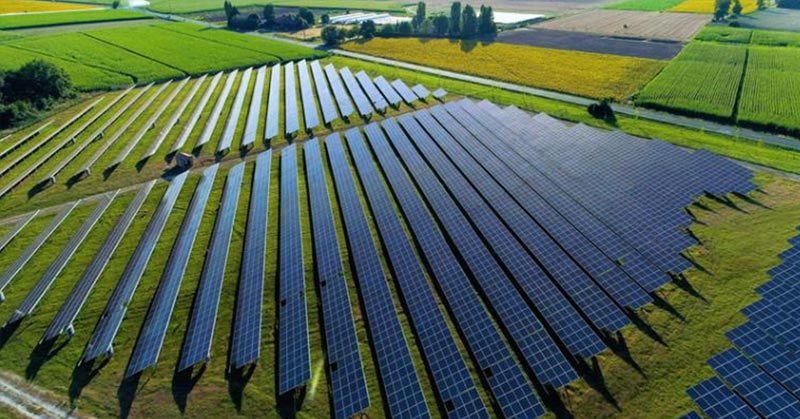An Arkansas school installed solar panels to save on costs, and the investment is paying off.
Schools are expensive to run. On average, it costs federal, state, and local governments over ten thousand dollars to send a child to public school for a year [1]. With this high cost of public education, many public school districts in the United States are facing immense budget deficits.
One school district in Arkansas was dealing with a massive budget deficit. The district superintendent decided they needed to do something about it, and so they installed solar panels. Not only did this get them out of debt, but it is now boosting teachers’ salaries.
Arkansas School Financial Difficulties
The Batesville School District comprises Batesville Highschool and five other public schools. All told, approximately 3200 students attend these schools each year. Back in 2017, the district was having some major financial difficulties.
The school district had a 250 thousand dollar budget deficit. These financial problems were having a ripple effect across the community:
- The district couldn’t pay teachers an attractive salary. This caused high staff turnover and wasn’t attracting high-quality teachers to the schools.
- Without enough good teachers, student performance was dropping. This subsequently caused the district’s state achievement rankings to drop as well.
When energy efficiency company Entegrity conducted an energy audit of all six of the schools, they discovered some shocking information. The Batesville school district was spending more than six hundred thousand dollars each year on utilities [2].
Armed with this knowledge, there was a clear answer to addressing their financial issues. Thankfully, the audit also revealed the solution: solar panels.
Arkansas School Installs Solar Panels
According to Entegrity, the school could save at least 2.4 million dollars over the course of twenty years. All they had to do was install solar panels. 1400 solar panels, to be exact. The company would also update the facilities with new lights, heating and cooling systems, and windows. The choice seemed obvious [2].
“We became the first solar project and the largest energy efficiency project in the state,” said superintendent Michael Hester [3].
In the two years since Entegrity installed the solar panels on Batesville high school’s property, the district has already saved nearly one million dollars in energy costs. Hester has used these savings to bump up teacher salaries.
“We’ve created more money to deliver our staff,” he said [3].
The solar panel project lowered the district’s annual energy consumption by 1.6 million kilowatts. Over the last three years, it has turned its 250 thousand dollar deficit into a 1.8 million dollar surplus. Hester has also been able to give pay raises to his staff that range between two thousand and three thousand dollars per teacher.
Jeanne Roepke is a Batesville High School teacher. She has felt the direct positive impact of the solar panels.
“Being able to have that little extra income in our paycheck every month helps with the extras that you might want, especially with Christmas coming up,” she said [3].
Read: Solar Is Officially The ‘Cheapest Electricity In History’
Arkansas School Installs Solar Panels and Inspires Others
Generation 180 is a nonprofit organization that advocated for clean energy in the US public school system. According to their report, there are at least 7 300 schools across the country using solar to save on energy costs [4].
As of 2019, 5.3 million students are attending schools that make use of solar power. That is an 81 percent increase from 2014. Generation 180 estimates that if every public school in the United States switched to solar power, the savings in emissions would equate to eighteen coal-fired power plants.
Of course, there are some obstacles, including policy and financing issues. Several states are now adopting policies to address those obstacles. This includes allowing solar companies to finance, build, and maintain solar panels on a customer’s property. Over time, the customer then pays the company for the energy the panels produce. This is how a majority of the schools in the US using solar are paying for their arrays.
Tish Tablan is a Generation 180 program director. She says that arrangements like this mean schools are seeing no upfront costs, and benefiting from immediate cost savings.
When the Arkansas school installed their solar panels, these policies weren’t in place in the state yet. Instead, the district paid for their panels with a 5.4 million dollar bond. Since then, however, they have watched other schools follow their lead. According to Hester, at least twenty other school districts in the area have copied their model.
“We have the numbers to prove and to show from performance that we’re walking the walk. That’s a slam-dunk for districts around us,” he said [2].
Community Support
The interesting thing about the Batesville school district is that it is just seventeen miles from one of the state’s largest coal-fired power plants. This plant, however, is set to shut down in ten years.
For this reason, residents in the area are very supportive of solar power initiatives. There is some anxiety in the community surrounding the closure of the coal plant and the subsequent loss of jobs. Many residents see solar as a way to generate other career opportunities to replace these losses.
Hester, for his part, was very encouraged by the response from the community. He wasn’t sure how they would feel about using taxpayer dollars to install solar panels at the school. Their support, however, has been a pleasant surprise.
The results, of course, have spoken for themselves. As more states put policies in place to encourage solar power in schools, hopefully we will see more and more districts follow in Batesville’s footsteps.
Keep Reading: Student Invented Solar Windows Made from Rotten Vegetables
- https://dgstudentfinance.com/qa/how-much-does-it-cost-to-run-a-school.html
- https://energynews.us/2020/10/16/southeast/this-arkansas-school-turned-solar-savings-into-better-teacher-pay/
- https://www.thv11.com/article/news/education/batesville-schools-increase-teach-pay-solar/91-c14ab617-b106-4b50-8146-85108163c4f0
- https://generation180.org/brighter-future-2020/

